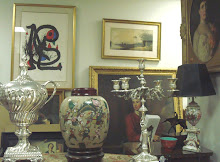 Jan Van Chelminski was a famous painter of the late 19th and early 20th centuries of Polish origin who was widely collected by the wealthy on both sides of the Atlantic. While little is known about the artist’s personal life or professional development, it is clear to judge from his paintings that he was academically trained and had an interest in military history, gentlemanly leisure activities and winter scenes. Chelminski’s name did not escape the attention of his contemporaries, often appearing in some of the most popular publications of the day. The Burlington Magazine for Connoisseurs of December 1904 remarks in the “Notes From France” section that “at the Gallery of Modern Artists, the Polish painter Jan Chelminski, has been exhibiting some interesting military pictures.” Numerous New York Times articles include mentions of his work and there is even an advertisement in the Chicago Tribune of 1927 that mentions that paintings by Chelminski will accompany paintings by others such as Corot at Grant’s Art Galleries at 21 South Wabash Ave.
Jan Van Chelminski was a famous painter of the late 19th and early 20th centuries of Polish origin who was widely collected by the wealthy on both sides of the Atlantic. While little is known about the artist’s personal life or professional development, it is clear to judge from his paintings that he was academically trained and had an interest in military history, gentlemanly leisure activities and winter scenes. Chelminski’s name did not escape the attention of his contemporaries, often appearing in some of the most popular publications of the day. The Burlington Magazine for Connoisseurs of December 1904 remarks in the “Notes From France” section that “at the Gallery of Modern Artists, the Polish painter Jan Chelminski, has been exhibiting some interesting military pictures.” Numerous New York Times articles include mentions of his work and there is even an advertisement in the Chicago Tribune of 1927 that mentions that paintings by Chelminski will accompany paintings by others such as Corot at Grant’s Art Galleries at 21 South Wabash Ave.
Chelminski’s most memorable paintings are of military leaders. French, English, and even American military leaders are either painted alone on horseback or in the midst of their military setting, having with them an entourage of assistants and Generals. These military paintings stretch from subjects of the Napoleonic Wars to the First World War but are always traditional compositions displaying a high degree of skill. Aside from these pictures are his well-known images of animals. A New York Times article from 1887 notes that he is an animal painter of good reputation that is known for his adept depictions of horses.

The paintings of Chelminski have been displayed and owned by famous institutions and people owing to his talent and classic subject matter. One painting, “the Fugitive Nihilist” was displayed at the American Art Galleries and owned by William Shaw. An article from 1890 in the New York Times mentions that this particular painting managed to rise above the rest and earn distinction for Chelminski. Pieces by Chelminski have also been owned by F.S. Gibs, a New York Senator at the beginning of the 20th Century who amassed a sizable art collection that the Times called “one of the finest private collections of paintings in this part of the country.” The fact that wealthy collectors decided to include a piece by Chelminski in their collection speaks volumes about his success as an artist.
MIR Appraisal Services has two exceptional paintings by Jan Van Chelminski in its collection, both inspired by the early 19th century European military conflicts. The first, a smaller piece, depicts elaborately dressed cavalrymen in the midst of a martial maneuver. The second is larger and depicts a remarkably resolute Napoleon fresh from exile on horseback and followed by a line of cavalrymen of high rank stretching to the horizon. This is a remarkable piece both because of its composition and its subject matter. Napoleon’s rise and fall from power are well documented by famous artists such as Jacques-Louis David and Jean-Leon Gerome and has become an almost timeless subject. A human drama of ambition, conquest and defeat, the story of Napoleon ensures that any skilled painting of the General and Emperor is sure to be important. A similar Chelminski piece depicting Napoleon’s entry into the outskirts of Berlin of the same size recently sold at Sotheby’s for $98,000.
The value of the art of Jan Van Chelminski is unquestionable. A popular artist during his lifetime and even today, one can even find art posters depicting some of the artist’s most loved works. Paintings by Chelminski have been sold at auction by Sotheby’s an average of twice a year, many fetching more than their estimate and all managing to sell. The military paintings are very popular, and the paintings featuring Napoleon are among the artist’s most valuable pieces, making the work in MIR’s collection doubly remarkable.

 The art of
The art of 














